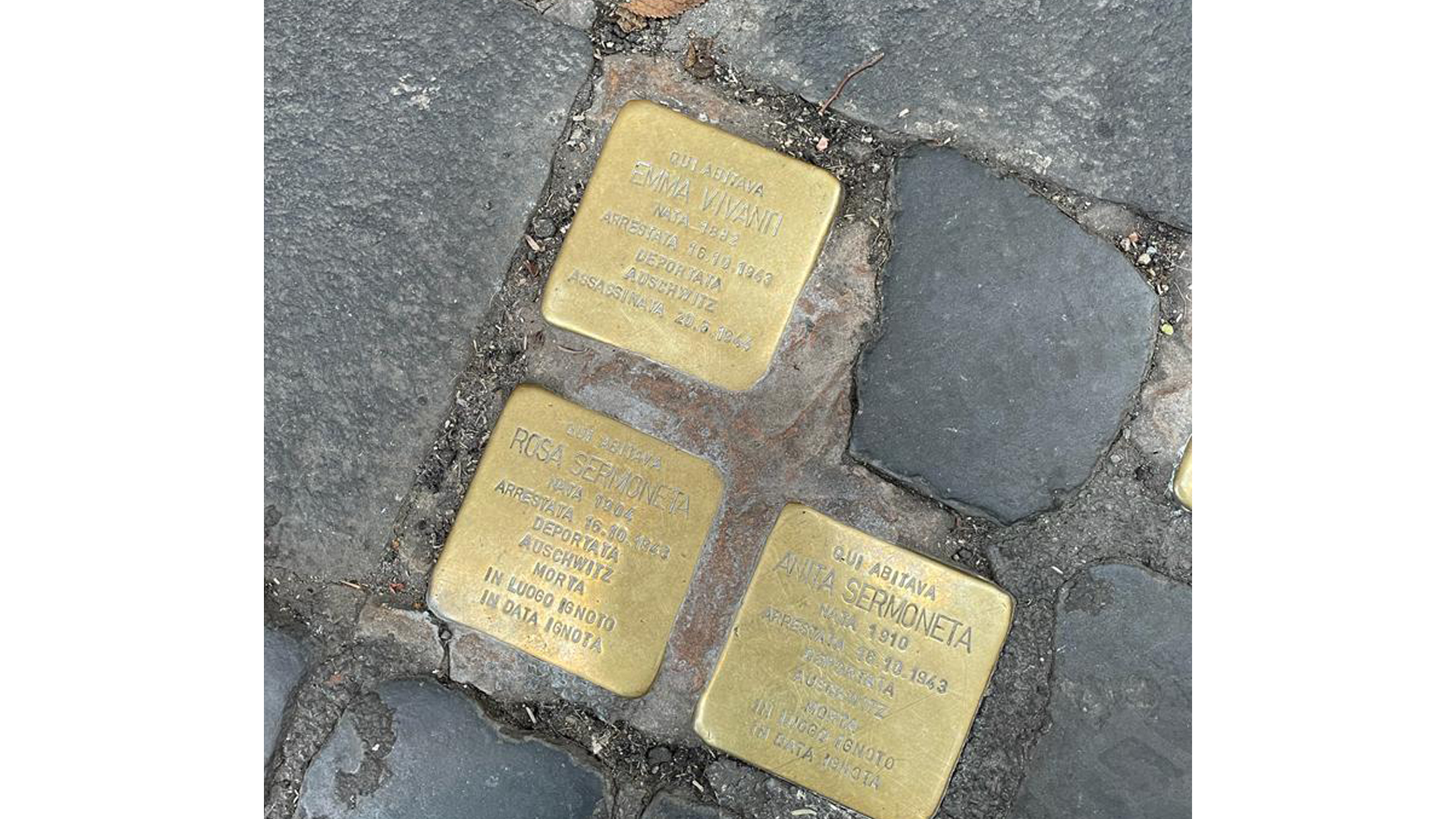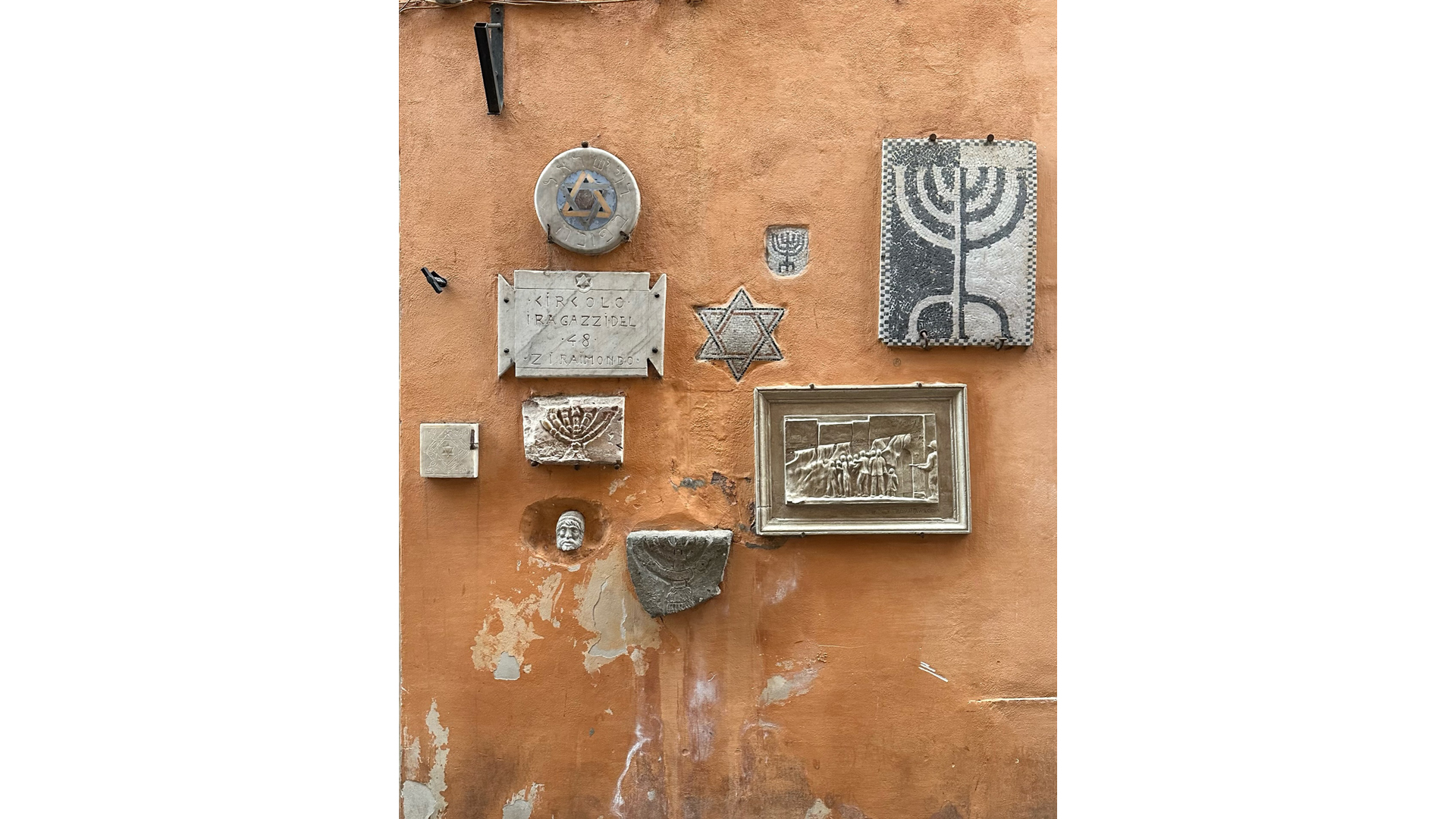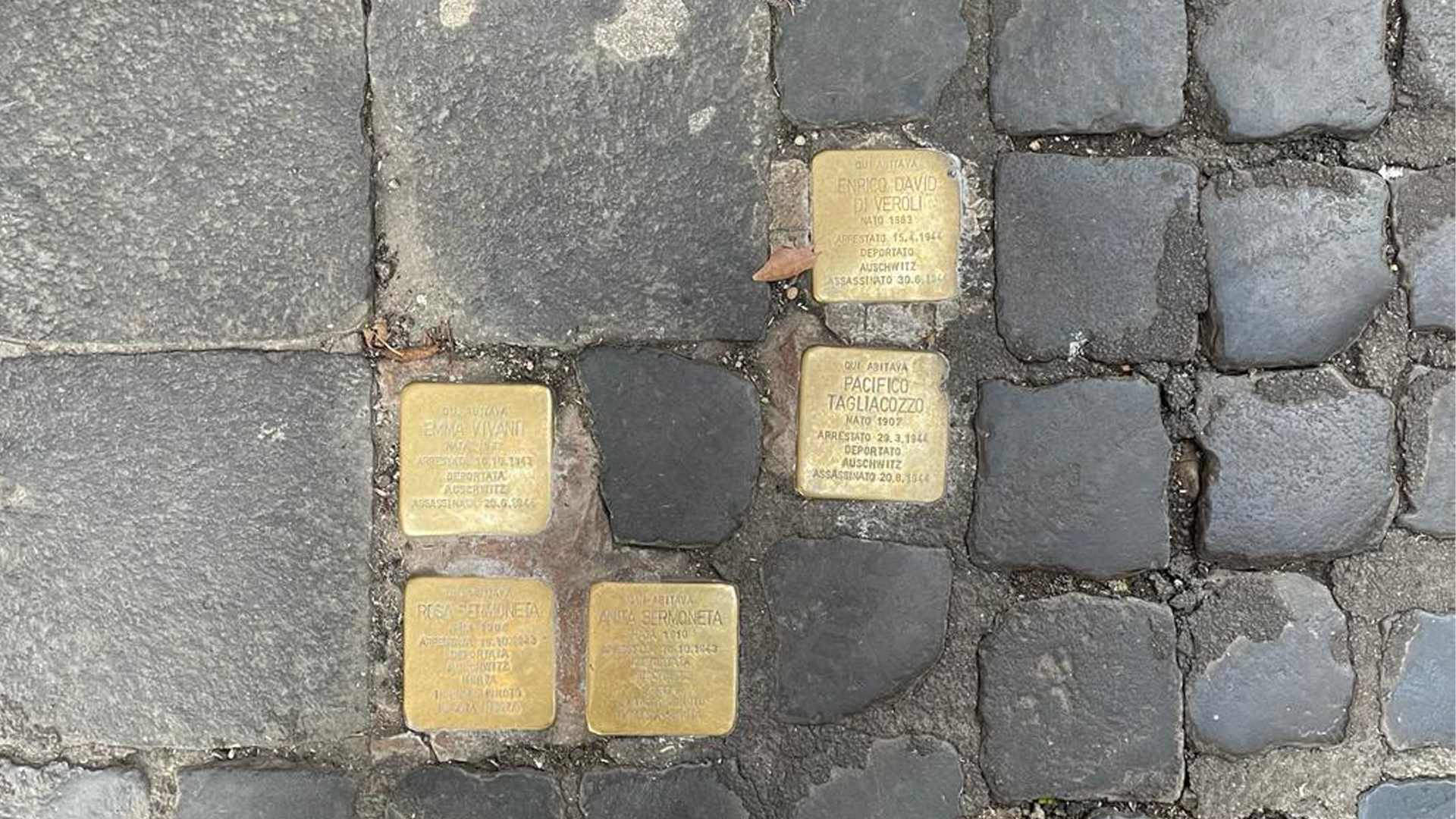On International Holocaust Remembrance Day, the country reckons with the part it played in one of history’s worst genocides
Hundreds of small, golden cobblestones freckle the streets of many of Rome’s historic and scenic quarters. You can find them spread out or clustered in groups in areas such as Trastevere, the Jewish Ghetto, Monti, Prati, Viale Aventino and more. On sunny days, they shine even brighter, forcing the eye downward to read the words etched onto their brass surface.

(Photo Credit: Annie Ojile)
These are Stolperstein, which in German literally translates to “stumbling stone.” In Italy, they are called “pietre d’inciampo” and their small, square shapes mimic the Eternal City’s famous sanpietrini, the cobblestones that lend so much charm to Rome’s streets. These stumbling stones tell the stories of ordinary people, of men, women and children, who were deported to concentration camps, executed in gas chambers or at the end of rifles or whose bodies gave out from exhaustion, starvation and sickness. These small golden cobblestones, inconspicuous as they are obvious, tell of the lives and deaths of some 300 Roman Jews – they list their names, dates of birth, deportation dates and death dates. When these plaques are clustered together in groups, it signifies the mass deportation of an entire family.
There is Giulio Mortera, who was 73 when he was deported to Auschwitz and executed seven days later; Silvana Milano, a 17-year-old deported to Auschwitz who was murdered three months later in Bergen-Belsen; Renato Villoresi, who was arrested at 27 and shot five days later in the Ardeatine Caves; and Giovanni di Castro, who was only a few months old when he was deported to and murdered in Auschwitz.
More than 2,000 stumbling stones have been added to the streets and squares of more than 140 municipalities across the country. They can be found in almost every Italian region, from Sicily, Puglia and Abruzzo to Tuscany, Veneto and Emilia-Romagna. Italian newspaper Il Sole 24 Ore, created a comprehensive, interactive map to all of the stumbling stones found in Italy. Each red square represents a plaque and provides its location as well as biographical information on the person it honors.
The Holocaust in Italy
At the time of World War II, Jews had lived in Europe for over two thousands years and the Italian Jewish community was one of the oldest in Europe, according to the United States Holocaust Memorial Museum. In fact, the Jewish Ghetto in Rome dates back to the times of the Ancient Romans. By 1933, Italian Jews made up a small percentage of the Italian population and there was generally little antisemitic sentiment in Italy. While there were antisemitic fanatics anong the Fascist ranks, Italian Facism was not fixated on antisemitism like the Nazi party was. Antisemitic legislation was implemented in 1938, a year before Italy entered the war and joined forces with the Axis powers. German authorities began rounding up Italian Jews in October and November of 1943. Major cities like Rome, Milan, Genoa and Florence were particularly targeted, according to the United States Holocaust Memorial Museum.
Over the course of the war, German forces deported over 8,500 Italian Jews from Italy, Italy-occupied France and the islands of Rhodes and Kos. Almost all were sent to Auschwitz-Birkenau, a concentration and extermination camp that was in operation from 1942 to 1944. Germans shot approximately 200 Jews in Italy, nearly half in the Ardeatine Caves, located just outside of Rome, in March of 1944. Roughly 100 Italian Jews died in prisons and police transit camps, according to the United States Holocaust Memorial Museum.

(Photo Credit: Annie Ojile)
In late 1943, there were approximately 12,000 Jews living in Rome. Deportations began in mid-October 1943 and carried on through at least mid- May 1944. The city was liberated on June 4, 1944. Roughly 1,800 Roman Jews were deported to Auschwitz-Birkenau where the majority of them were executed soon after their arrival. Some were shuffled around to other concentration camps and killing centers, including Dachau and Bergen-Belsen, where they were either murdered or succumbed to their horrid living conditions. According to the United States Holocaust Memorial Museum, over 10,000 Roman Jews survived the Holocaust by escaping arrests and hiding throughout the city, some finding refuge in the Vatican City.
The stumbling stones project
The stumbling stones memorials are not limited to Italy, nor did the project begin there. The plaques are the work of German artist Gunter Demning, who began the vast undertaking in 1992 to honor all the victims of the Nazi regime, including Jewish, Roma, disabled, Sinti, homosexual and dissident citizens. According to Statista, an online international statistics portal, roughly 17 million people were murdered by the Nazi regime and its collaborators between 1933 and 1945.
Now over three decades later since the first stumbling stone was laid, more than 70,000 of these memorials can be found in over 1,000 cities across 24 European countries, including Germany, Russia, Spain, Greece and Lithuania. Together, they make up the largest and most diverse Holocaust memorial in the world, according to the Embassy of the Federal Republic of Germany.
On International Holocaust Remembrance Day, these memorials shine even brighter in recognition of the 17 million lives lost during one of the world’s worst genocides. Although small, the stumbling stones force us to acknowledge the darkness of our past, one that is not far removed from the present day.
Asia London Palomba
Asia London Palomba is a trilingual freelance journalist from Rome, Italy. In the past, her work on culture, travel, and history has been published in The Boston Globe, Atlas Obscura,The Christian Science Monitor and Grub Street, New York Magazine's food section. In her free time, Asia enjoys traveling home to Italy to spend time with family and friends, drinking Hugo Spritzes, and making her nonna's homemade cavatelli.

